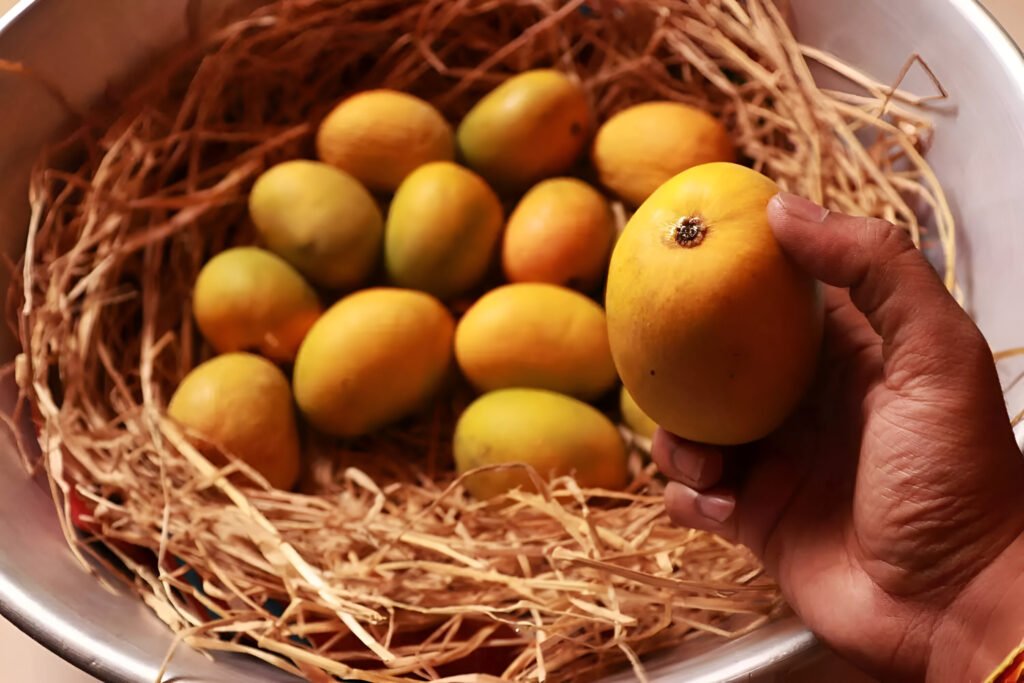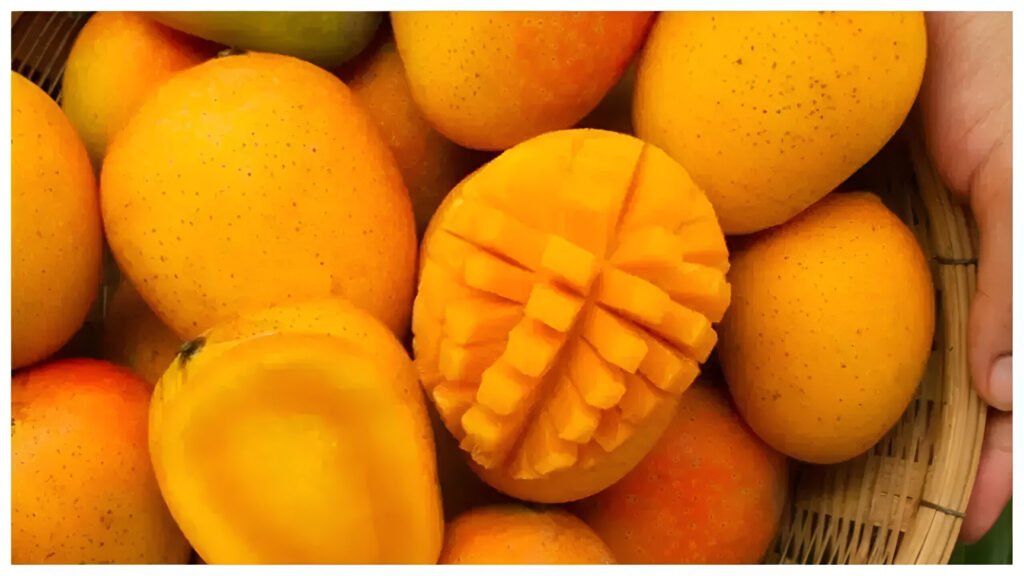
Summer is here, and so is mango season! But while enjoying this juicy and delicious fruit, there’s always a small worry in the back of our minds: what if it’s been ripened using harmful chemicals? Even though using substances like calcium carbide is illegal in India, it’s still commonly used by some sellers to speed up the ripening process. The good news is that wellness coach Luke Coutinho recently shared a simple method to check your mangoes at home. These tips are simple, swift, and don’t need fancy equipment, just your senses and a bit of care.
Look at the skin.
The initial step is to look at the outer surface of the mango. A naturally ripened mango will have irregular coloring with spots of green, yellow, or red. However, if the mango has a very uniform yellow or orange color, it could be an indication that it was chemically ripened. Another indication is tiny black spots on the skin, which are not typically found in naturally ripened mangoes.
Check the texture of the mango.
Then, press the mango lightly with your fingers. A naturally ripe mango will be firm but not too soft and should have the correct amount of pulp inside. A chemically ripened mango can be soft, unevenly soft, or very tender at certain spots. This odd softness can mean that the fruit is not ripened naturally from the inside out.
Try the water test.
This is one of the easiest and most interesting tests. Take a glass or bowl of water and drop the mango in it. If the mango floats, then generally that’s a good indication; it indicates that the fruit is rich in pulp and was probably ripened naturally. If the mango sinks, though, then possibly it has been given the calcium carbide treatment. The carbide-ripened mangoes get more air inside because of quicker ripening, and that makes them lighter.

Smell the mango.
A naturally ripe mango will have a sweet, pungent, fruity smell, particularly where the stem attaches. If you can’t detect any scent at all, or if the mango smells like chemicals, it could have been artificially ripened. Your nose is more accurate than any test. Mangoes possess a distinctive, irresistible odor.
Buy from trusted sources.
If possible, try to buy mangoes from reliable sellers or organic farms. Local markets and vendors you know personally are often safer than large wholesale markets. Some supermarkets also mention whether their fruits are naturally ripened; keep an eye out for such labels. Choosing mangoes from good sources can reduce the chances of bringing home chemically treated fruits.
Wash and peel the fruit.
Even if the mango looks fine, it’s always a good habit to wash it well under running water. If you’re unsure about how the fruit was ripened, it’s safer to peel off the skin before eating. This helps remove any chemical residue that may still be present on the outer layer.
Luke Coutinho says that while this test is not 100% accurate like a lab test, it’s a useful and simple way for people to get some idea about the safety of their fruits. He strongly recommends doing this check at home, especially if you have children, parents, or elderly people in the house. He adds, “This is a simple test that all of you can do at home. Should you do the test? Absolutely, yes.”
He ends with an important reminder: “Do not be afraid of the humble mango. Be afraid of a poor lifestyle.” This means that while it’s important to be cautious, we shouldn’t stop enjoying fresh, seasonal fruits. Instead, we should stay informed and take small steps to ensure our food is healthy and safe.
So this summer, go ahead and enjoy your mangoes, but take a moment to check them first. These small actions can go a long way in protecting your health and the health of your family.









